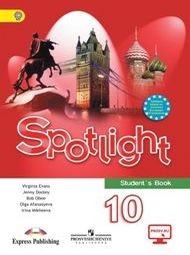
Учебник английского языка для 10 класса, автор – Ваулина, представляет собой увлекательный и структурированный подход к обучению школьников. В нем удачно сочетаются теоретический материал, упражнения для практики и интересные задания, способствующие развитию всех языковых навыков. Это пособие подходит как для самостоятельного изучения, так и для работы на уроках.
ГДЗ по Английскому Языку 10 Класс Модуль 5e Номер 3 Ваулина — Подробные Ответы
Какой(ие) абзац(ы):
• развивает(ют) события?• подгатавливает(ют) обстановку?• заканчивает(ют) историю?
Какие времена использовал автор?
• Paragraphs 2 and 3 move the plot forward, deepening the narrative. (2 и 3 абзацы углубляют рассказ, развивая события).
• Paragraph 1 establishes the setting and context. (1 абзац задает атмосферу и место действия).
• Paragraph 4 concludes the story, bringing it to an end. (4 абзац завершает рассказ).
The author has employed a mix of past tenses (прошедшее простое, прошедшее продолженное и прошедшее совершенное).
In storytelling, the structure of the narrative is essential to guiding the reader through the sequence of events and emotions. Let’s break down how the different paragraphs contribute to the overall flow of the story:
Paragraph 1: The opening paragraph serves to set the scene. It introduces the reader to the setting and provides important context, such as the location, the time of day, or the mood of the characters. This paragraph helps establish the atmosphere and prepares the reader for the unfolding events. Without this introductory piece, the reader would feel disconnected from the story and not understand the environment in which the characters are operating.
For example, if a story begins with a description of a bustling city street, it immediately draws the reader into that specific place. The sensory details, like the sounds of traffic, the scent of street food, or the weather, can all contribute to this setting. This first paragraph is crucial in making the reader feel like they are there with the characters.
Paragraphs 2 and 3: These two paragraphs are where the core of the story develops. They carry the plot forward, moving the characters through various events and obstacles. They build on the foundation laid in the first paragraph, creating tension, conflict, or intrigue. Here, the writer introduces the central action of the story and the characters’ reactions to it. These paragraphs are typically where the most dynamic and engaging elements of a narrative take place.
In terms of tense, the writer often employs the past simple to narrate events that happen in a sequence, such as «Rachel and Sarah arrived at the carnival» or «They decided to go to the café.» Meanwhile, the past continuous tense can be used to show actions in progress or to describe what was happening at a specific time, such as «It was raining heavily» or «The crowd was gathering around.» The past perfect can help show actions that occurred before other past events, like «They had been planning the trip for months» or «By the time the rain started, they had already found a shelter.»
Paragraph 4: The final paragraph ties up the story and brings it to a conclusion. It resolves the conflict, answering any lingering questions and providing closure. This part of the story often reflects on the outcome of the events and gives the reader a sense of finality. It may also leave the reader with a thought-provoking message or a reflection on the characters’ journey. In our example, after the rain had passed and the characters had shared their coffee, the story ends, leaving the reader with a sense of satisfaction and completion.
Use of Tenses: Throughout the story, the author skillfully uses various past tenses to create a nuanced narrative. The past simple is the most commonly used, providing a straightforward account of events that happened. The past continuous tense is used to emphasize actions or situations that were happening at a particular moment in the past. It can show ongoing actions or set the scene for something important. The past perfect tense is used less frequently, but it’s valuable for explaining what happened before another past action. For example, «They had already met when the storm started.»
In conclusion, the structure of the story, with its distinct opening, developing middle, and satisfying ending, guides the reader smoothly through the events. The use of varied past tenses allows the author to describe actions, emotions, and contexts in rich detail, creating a compelling narrative that draws the reader in.



Оставь свой отзыв 💬
Комментариев пока нет, будьте первым!